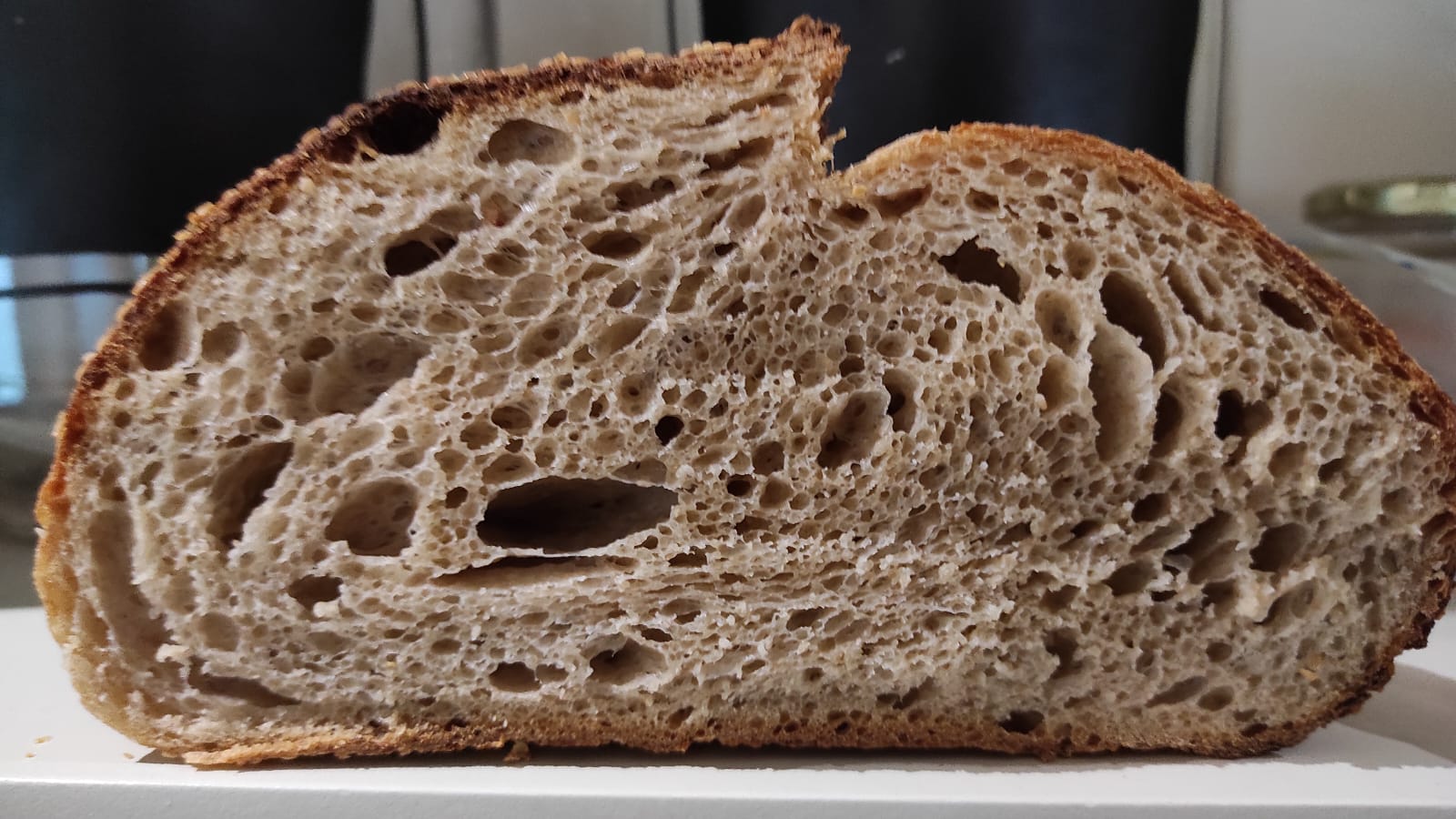I’m inclined to try refrigerating my dough after mixing in the starter to prevent acids from the yeast interfering with the autolysis. But cold usually slows chemical processes too, so this may be counterproductive.
I’m trying to max out the autolysis of the dough, so I don’t need to knead much. Anything more than 3 minutes of kneading feels like too much work.
Adam Ragusea talks about autolysis in this video – he seems to be of the opinion that acid from fermentation is not a factor: https://youtu.be/orpTeX_EGXA?si=n0OxksbbUynUFhJO&t=770
Pictured: My most recent loaf of sourdough. I like the crust, but I did not get enough oven spring.
Refrigeration slows but does not stop autolysis. Peter Reinhart use over night refrigeration during the fermentation (rise) to improve flavour. I can’t remember if it was him or Ken Forkish who provides a process with no traditional kneading, that I adapted as below.
Here’s my process: mix 4 cups flour, 2 cups water and sourdough starter (1/2 or 1 cup). Let sit for 30 minutes (autolyse). Add 2 tsp salt and 1/2 tsp yeast (if using any dry yeast) and mix it in. The dough is quite tacky, so I wet my hands and use pinching motion to mix, then stretch and fold it over itself. Repeat this for about five minutes. (Wash your hands with cold water to remove dough; warm water turns it to glue.) Let rest for 30 minutes. Stretch and fold the dough over itself five or six times, let sit for 30 minutes. Repeat four times. This takes 2h30, and the dough will have risen to be pillowy or the consistency of a marshmallow. Let it rise for another 2-3 hours, or refrigerate over night. Shape, proof and bake.
If you go for a slow fermentation, I have experienced that almost no kneeding is necessary. But then we are talking of several proofings and total time of at least 24 hours. But instead of taking my unscientific opinion, I raise you The science of Bread. Have fun watching, it’s amazing
Cold does slow the autolyse, but slower is generally better for flavor. That aside, I find that longer kneading makes a better loaf. I shoot for 8 minutes minimum, until my arms give up, and have no problems with spring.
I do zero kneading. Mix flour and water, rest 30m. Mix in starter, rest 30. Fold, turn 1/4, repeat 3x more times, rest 30. Repeat folks and rest twice, maybe more. Love dough, bulk ferment 3-6 hours. Punch, shape, ferment 2-3 hours. Stash in fridge. Next day, ferment more until happy. Score, bake.
No kneading. Fold and wait will do a lot for you.
I am lazy lately, mix in the big KitchenAid with the dough hook a few minutes, stretch and fold maybe twice, over an hour, sometimes not, but always a rest in a clean bowl then a preliminary shaping, bench rest, shape and refrigerate in the baskets to bake the next day. This is getting me a more even crumb than just stretch and fold did. It does continue to develop in the refrigerator, yes, but also makes it much easier to score, and cold dough into hot pan with a lid generates steam that helps it rise.


